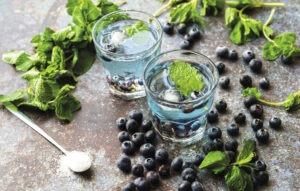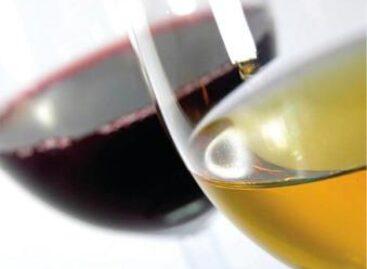The domestic gin market is on the rise – According to SPAR, customers are increasingly aware and open to Hungarian brands
Gin sales have grown spectacularly in Hungarian retail in recent years. According to SPAR data, the chain recorded a 40% increase in this category in 2021–2022 and a further 12% in 2023. The growth is also fueled by changing consumer habits, the demand for quality drinks and the rise of domestic brands, writes a recent article in Agrárszektor.
Longdrink, design and awareness – this is how today’s gin consumer responds
 “In recent years, we have achieved significant growth in terms of turnover in the increasingly popular gins,” said Márk Maczelka, Head of Communications at SPAR Hungary. The seasonal effects are also clearly visible: sales increase dramatically from May, demand doubles in July–August, while the most prominent month remains December – due to the holidays.
“In recent years, we have achieved significant growth in terms of turnover in the increasingly popular gins,” said Márk Maczelka, Head of Communications at SPAR Hungary. The seasonal effects are also clearly visible: sales increase dramatically from May, demand doubles in July–August, while the most prominent month remains December – due to the holidays.
Customers are becoming more and more aware: they prefer natural ingredients, special flavor profiles, and aesthetic packaging is also a decisive factor, especially if the drink is intended as a gift. The popularity of gin is also increased by the fact that when consumed in long drinks or cocktails, the drink is not necessarily focused on its alcohol content, but on its flavor harmony.
The success of Hungarian gins is unbroken
The demand for domestic gins has been growing continuously for years. “Today, it is unimaginable that a delicatessen or catering establishment does not stock Hungarian gin,” emphasized Péter Bárány, founder and CEO of Gin Market. Two new Hungarian brands will also be introduced at this year’s event, which reflects the dynamism of the market and the expansion of consumer demands.
Hungarian products also perform well in international competitions: several domestic brands have won recognition in prestigious competitions. Although they are competitive in terms of price-performance ratio, they are currently unable to compete with large-volume, lower-cost “basic” gins. The goal of domestic producers is to reduce their cost of production by ramping up production and thereby reduce consumer prices.
The profile of the gin consumer: youthful, gourmet, open
The typical domestic gin consumer is between 24 and 50 years old, primarily a long drink or cocktail consumer. The demand for gin and tonic is mainly dominated by female customers, but consumption neat, with ice, is also becoming more common among men – especially in Western Europe. For many, gin and tonic has become a key player in premium-quality home cocktails.
Related news
25,000 packages of donations will reach people in need as a result of the 2025 Joy of Giving! fundraising campaign
🎧 Hallgasd a cikket: Lejátszás Szünet Folytatás Leállítás Nyelv: Auto…
Read more >Premium Gin Hungary introduced the LE Tribute brand at Time Out Market Budapest
🎧 Hallgasd a cikket: Lejátszás Szünet Folytatás Leállítás Nyelv: Auto…
Read more >The Joy of Giving has begun! – thousands of volunteers are waiting for donations nationwide
🎧 Hallgasd a cikket: Lejátszás Szünet Folytatás Leállítás Nyelv: Auto…
Read more >Related news
Egg prices up nearly one-third
🎧 Hallgasd a cikket: Lejátszás Szünet Folytatás Leállítás Nyelv: Auto…
Read more >Layers of problems
🎧 Hallgasd a cikket: Lejátszás Szünet Folytatás Leállítás Nyelv: Auto…
Read more >Too many gifts, too much food: our holiday excesses are putting a serious strain on the environment
🎧 Hallgasd a cikket: Lejátszás Szünet Folytatás Leállítás Nyelv: Auto…
Read more >






